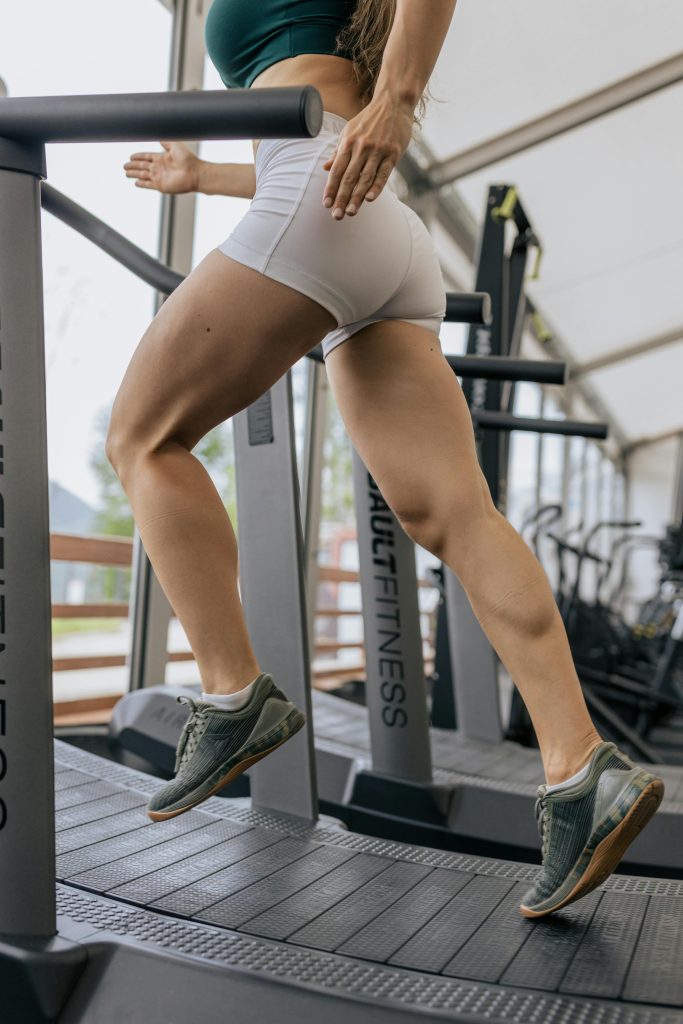Introduction: Why Calf Training Matters
Calf muscles are often overlooked in strength training routines, they play a critical role in lower body performance, stability, overall aesthetic symmetry. you’re a beginner struggling to grow your calves or an advanced athlete looking to refine your leg sculpting game, understanding the biomechanics, exercise programming, and recovery strategies can accelerate your results. This in-depth, 4,000-word guide provides a complete roadmap on how to build calf muscles fast—from beginner-level workouts to pro techniques, equipment recommendations, and smart recovery protocols.
Understanding Calf Muscle Anatomy
Before we dive into the how, let’s break down the calf muscle anatomy to know what exactly we’re training:
1. Gastrocnemius
- The most prominent part of the calf.
- Consists of two heads (medial and lateral).
- Primarily worked during standing calf exercises.
2. Soleus
- Located underneath the gastrocnemius.
- Activated more during seated calf raises.
- Composed mostly of slow-twitch fibers—needs higher rep ranges.
Understanding these two muscles helps in structuring your calf training more effectively and ensuring balanced development.
Chapter 1: Calf Building for Beginners
Step 1: Establishing the Foundation
If you’re just getting started, focus on these foundational tips:
- Train calves 2–3 times per week.
- Mix up exercises like standing and seated calf raises.
- Start with bodyweight exercises before progressing to weights.
Step 2: Basic Calf Exercises
- Standing Calf Raises (Bodyweight or Dumbbell)
- 3 sets x 15–20 reps
- Targets the gastrocnemius.
- Seated Calf Raises
- 3 sets x 20–25 reps
- Focuses on the soleus.
- Jump Rope
- 1–2 minutes x 3 rounds
- Enhances muscle endurance and explosive strength.
Step 3: Focus on Form
- Move through full range of motion—heel drop to full peak.
- Avoid bouncing; control the movement for proper time-under-tension.
Chapter 2: Intermediate Strategies to Grow Calves
Once you’ve trained consistently for 4–6 weeks, you can level up.
Technique Tweaks for Growth
- Increase Time Under Tension
- 3-second eccentric (lowering) phase.
- Pause at the bottom and top of the rep.
- Add Load
- Use barbells, dumbbells, or a Smith machine.
- Weighted standing and seated raises add hypertrophy stress.
- Vary Angles
- Toes-in: Emphasizes outer calf.
- Toes-out: Targets inner calf.
Sample Intermediate Workout
- Standing Calf Raises – 4 sets x 15 reps
- Seated Calf Raises – 4 sets x 20 reps
- Donkey Calf Raises – 3 sets x 15 reps
- Jump Rope – 3 sets x 1 minute
- Treadmill Incline Walking – 10 minutes cool-down
Chapter 3: Advanced Calf Building Tactics
By this stage, you’re ready for elite-level training intensity.
Advanced Techniques
- Rest-Pause Sets
- Perform as many reps as possible, rest 15 seconds, repeat until failure.
- Drop Sets
- Start with heavy weight and reduce it by 20–30% for 2–3 quick drops.
- Superset Standing + Seated Raises
- Blast both gastrocnemius and soleus in one brutal superset.
- FST-7 (Fascia Stretch Training)
- 7 sets of 10–12 reps with 30s rest between. Finish your calf day with this for a pump.
- Daily Calf Training (Micro Volume)
- Do 1–2 sets daily of bodyweight calf raises (high reps) for frequency volume.
Advanced Calf Day Split
- Standing Calf Raises – 4×12 (Rest-Pause Final Set)
- Seated Calf Raises – 5×20 (Last 2 Drop Sets)
- Leg Press Calf Extension – 3×15
- FST-7 Seated Raises – 7×12 (30 sec rest)
- Incline Walk (Treadmill or Sled Push) – 10–15 mins
Chapter 4: Calf Machine Training Tips
1. Standing Calf Raise Machine
- Mimics real-life movements.
- Focus on heavy loads and progressive overload.
2. Seated Calf Raise Machine
- Best for isolating the soleus.
- Use higher reps and slow eccentrics.
3. Leg Press Calf Extensions
- Keep knees slightly bent.
- Load heavy and emphasize peak contraction.
Chapter 5: At-Home Calf Workouts
Don’t have access to a gym? No worries.
Home Routine (No Equipment)
- Single-Leg Calf Raises – 4×20 each leg
- Wall Calf Stretch (Isometric Hold) – 3×30 seconds
- Stair Step Calf Raises – 4×20
- Jump Squats (Heel Drive) – 3×15
Use resistance bands or a backpack filled with books for extra load.
Chapter 6: Nutrition for Calf Muscle Growth
1. Protein Intake
- Aim for 1.6–2.2g per kg of bodyweight.
- Best sources: Chicken breast, eggs, whey protein, lentils, tofu.
2. Carbs and Recovery
- Fuel intense calf training with carbs like rice, oats, and fruits.
3. Hydration & Electrolytes
- Calves are prone to cramps.
- Drink plenty of water and include magnesium, potassium, and sodium.
4. Supplements
- Creatine Monohydrate
- Beta-Alanine
- BCAAs for intra-workout endurance
Chapter 7: Recovery & Stretching Techniques
Calves need time and attention to recover—don’t skip this part.
Post-Workout Recovery Tips
- Foam roll calves for 2–3 minutes after each session.
- Use a massage gun on trigger points.
- Calf compression sleeves can improve blood flow.
- Prioritize sleep (7–9 hours).
Daily Calf Stretching Routine
- Wall Stretch – 2×30 seconds per leg
- Downward Dog Hold – 3×30 seconds
- Standing Bent Knee Stretch – 3×20 seconds
Chapter 8: Tracking Progress and Avoiding Plateaus
Track These Metrics:
- Weekly volume (sets x reps x load).
- Calf circumference (measure every 2 weeks).
- Strength in key lifts (seated/standing calf raises).
Avoid These Mistakes:
- Training too infrequently.
- Using partial range of motion.
- Not progressively overloading.
- Ignoring recovery and stretching.
Conclusion: Unlocking Your Calf Potential
Building big, strong, and defined calf muscles takes consistency, intelligent programming, and patience. Whether you’re just starting out or pushing past plateaus, this guide offers all the tools you need—from beginner bodyweight routines to advanced hypertrophy techniques and machine training tips.
Remember: calves respond well to frequency, variety, and volume. Stick with your program, track your progress, and fuel your body right. Calves may be stubborn, but with the right strategy, growth is inevitable.

